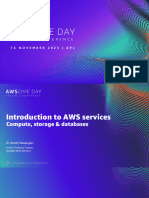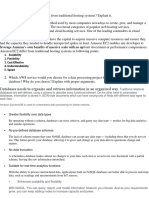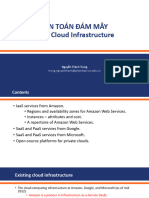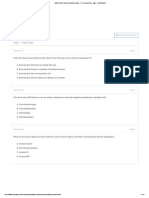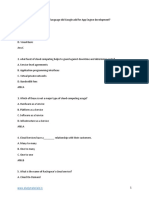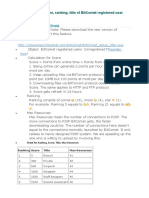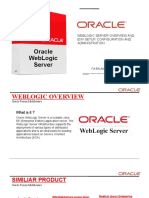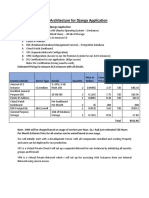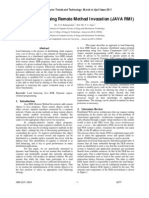0% found this document useful (0 votes)
26 views3 pagesQuestions
1. S3 can store larger amounts of unlimited data across buckets than EBS, which is limited to 1TB per volume and 20 volumes total.
2. Route 53 is AWS's DNS service which can be used for domain registration, routing traffic, and health checks.
3. Spot Instances offer significant discounts but can be interrupted, while Reserved Instances have high availability but require long-term commitments and offer smaller discounts than Spot.
4. VPC endpoints allow private connectivity to supported AWS services without a public IP by using AWS PrivateLink.
Uploaded by
pavan kumarCopyright
© © All Rights Reserved
We take content rights seriously. If you suspect this is your content, claim it here.
Available Formats
Download as DOCX, PDF, TXT or read online on Scribd
0% found this document useful (0 votes)
26 views3 pagesQuestions
1. S3 can store larger amounts of unlimited data across buckets than EBS, which is limited to 1TB per volume and 20 volumes total.
2. Route 53 is AWS's DNS service which can be used for domain registration, routing traffic, and health checks.
3. Spot Instances offer significant discounts but can be interrupted, while Reserved Instances have high availability but require long-term commitments and offer smaller discounts than Spot.
4. VPC endpoints allow private connectivity to supported AWS services without a public IP by using AWS PrivateLink.
Uploaded by
pavan kumarCopyright
© © All Rights Reserved
We take content rights seriously. If you suspect this is your content, claim it here.
Available Formats
Download as DOCX, PDF, TXT or read online on Scribd
/ 3

































